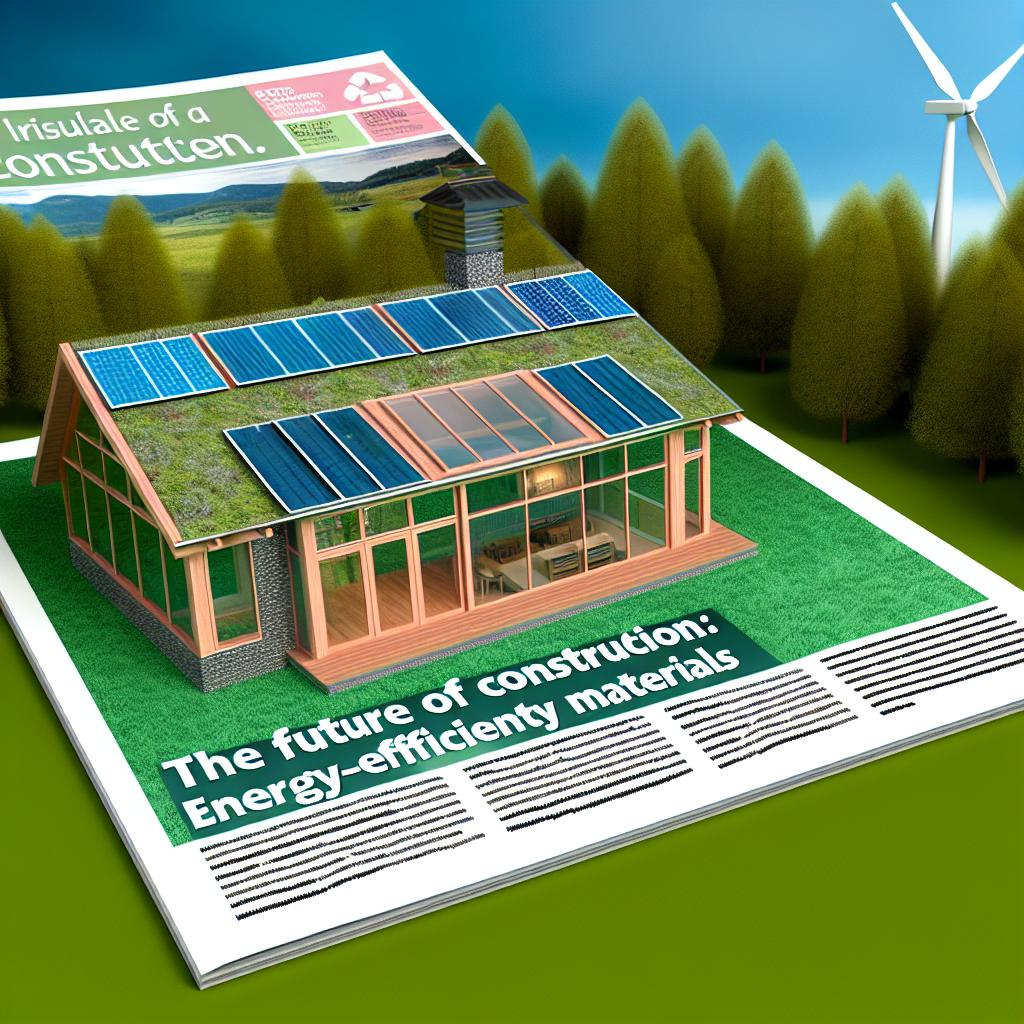The Importance of Energy-Efficient Building Materials
Energy efficiency is a pivotal element in the realm of sustainable construction and architectural design. The growing awareness of environmental issues has triggered an escalating need for energy-efficient building materials. These materials play a vital role in reducing energy consumption, cutting utility costs, and lessening the ecological footprint of buildings.
Reduction in Energy Consumption
The role of energy-efficient building materials in reducing energy consumption cannot be overstated. These materials contribute to minimizing the energy needed for essential activities such as heating, cooling, and lighting. For instance, high-performance insulation is a key player in reducing the need for excess heating in winter and cooling during summer. It does so by maintaining a consistent indoor temperature, alleviating excessive reliance on HVAC systems, and subsequently conserving energy.
Improved Insulation
A chief advantage of energy-efficient materials is their remarkable insulation capabilities. Options such as spray foam insulation, insulated concrete forms, and structural insulated panels (SIPs) serve effectively to mitigate heat loss during cold months and inhibit heat gain during hot months. The result is a more stable indoor climate, driving down energy consumption and offering a more pleasant living or working environment.
Reflective Roofing
Energy-efficient roofing materials, such as cool roofs, are specifically engineered to reflect a greater portion of sunlight while absorbing considerably less heat than traditional roofing methods. Such materials can notably curtail energy consumption by diminishing the demand for air conditioning systems. Detailed insights into cool roofing technologies are available here.
Economic Benefits
Apart from the obvious environmental advantages, the economic benefits of adopting energy-efficient building materials are valuable. Although the initial costs might appear steep, the subsequent reduction in energy bills often balances out the initial outlay over time. Buildings featuring energy-efficient characteristics often sustain higher property valuations and may qualify for energy rebates and tax incentives, making them an economically prudent option.
Lower Utility Costs
By significantly reducing the necessity for energy-intensive climate control systems, energy-efficient materials lead directly to decreased utility bills. Therefore, homeowners and businesses can perceive substantial financial savings, making these materials both a practical and economically advantageous investment.
Increased Property Value
In real estate markets, energy-efficient buildings typically command higher values. Buyers have become more attuned to the long-term benefits of reduced energy costs, thus finding such properties increasingly attractive. For an in-depth exploration of the financial benefits tied to energy-efficient homes, see additional resources here.
Environmental Impact
Embracing energy-efficient materials yields considerable benefits in terms of environmental conservation, chiefly by reducing carbon footprints. By enhancing the energy efficiency of buildings, these materials minimize the emissions associated with energy production.
Reduction of Greenhouse Gas Emissions
The energy efficiency gained through these materials reduces the demand for power generation, which is often dependent on fossil fuels. Consequently, there is a reduction in greenhouse gas emissions, providing support to beat back climate change and uphold environmental quality.
Sustainable Resource Use
A number of energy-efficient building materials are crafted using sustainable methods and resources. Using materials like bamboo, recycled steel, and sustainably sourced wood not only lowers environmental impacts but also promotes eco-friendly construction. Additional information regarding sustainable construction materials can be found here.
Long-term Benefits and Future Implications
The long-term advantages of integrating energy-efficient building materials surpass immediate economic and environmental gains. As global trends continue to shift toward sustainable development and climate change mitigation, these materials will become increasingly essential. They represent a future-ready solution that aligns with global objectives such as reducing carbon emissions, promoting resource efficiency, and fostering economic resilience.
Energy-efficient buildings can play a critical role in alleviating urban heat, improving air quality, and enhancing community health. As more cities and states implement regulations and standards that prioritize energy efficiency in buildings, compliance will not only be necessary but also beneficial for industries and consumers alike.
Innovation and Technological Advancements
The continuous progression in technology and material science paves the way for further advancements in energy-efficient building materials. Innovations such as smart glazing, phase change materials, and advanced thermal insulation are emerging to provide even greater efficiency. As these technologies evolve, they hold the promise of even more substantial energy savings and enhanced building performance.
Research and development remain crucial in driving these innovations forward. Investment in these areas ensures the steady introduction of novel materials and strategies, broadening the range of choices available for sustainable construction. Such advancements fuel the industry’s transition towards creating buildings that not only meet but exceed energy efficiency standards.
In conclusion, the utilization of energy-efficient building materials is of paramount importance in achieving significant benefits which encompass reduced energy consumption, economic savings, and positive environmental impacts. As society advances towards an ecologically responsible and sustainable built environment, these materials will serve as critical assets in meeting and transcending the challenges of today’s construction landscape.



